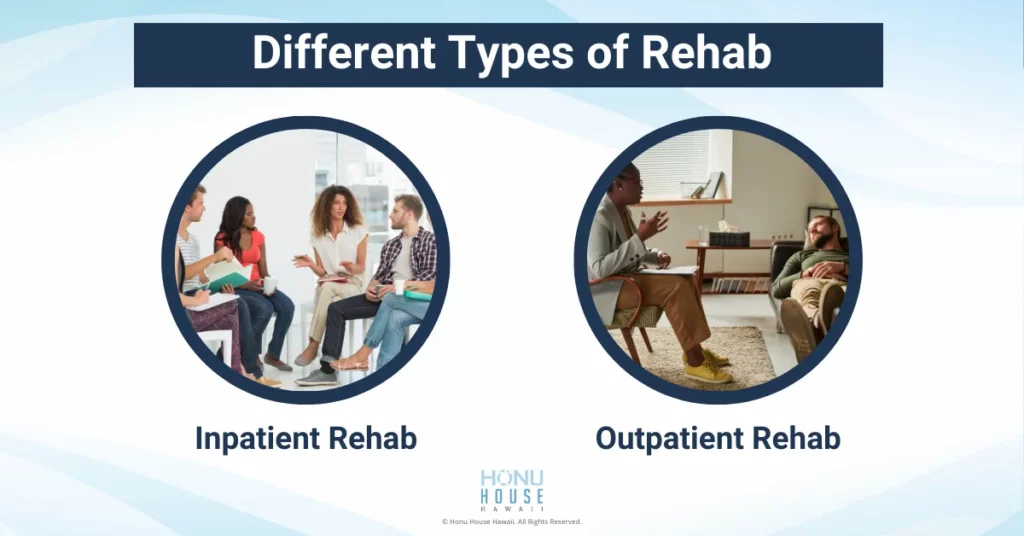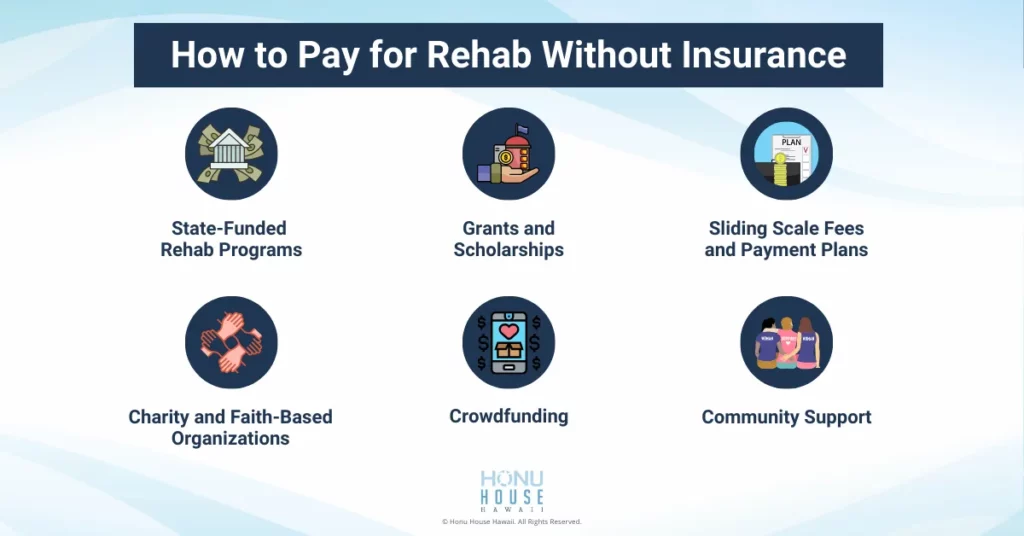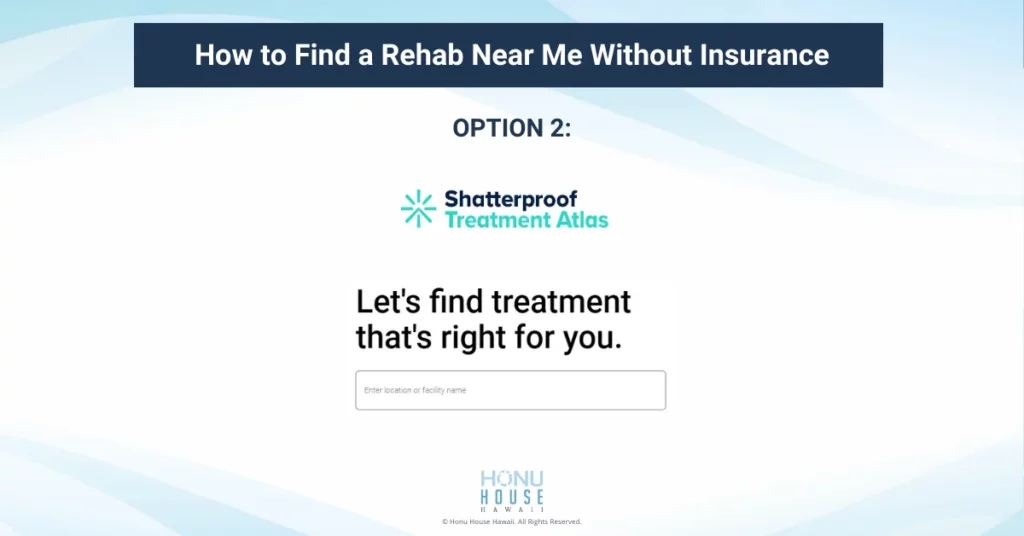
How To Go To Rehab Without Insurance?
-
By John Burke
-
March 27, 2024
Health insurance can alleviate the burden of paying for rehab by covering part of the cost. However, for many people battling with addiction, rehab can feel like a distant dream. The high cost of treatment, further intensified by a lack of insurance coverage, can pose a formidable challenge on the path to recovery. But what if we told you there’s hope?
Here, we’ll explore ways to pay for drug and alcohol rehab without insurance and other useful tips for getting the help you need to start your recovery journey.
Understanding the Different Types of Rehab Options

Before determining how to pay for rehab without insurance, it’s essential to understand the different types of rehab programs available. Rehab isn’t a one-size-fits-all solution, and the treatment cost varies from program to program.
That said, let’s explore the various types of rehabilitation center programs to help you determine the right one for your needs and budget.
Inpatient Rehab
Inpatient rehab or residential treatment centers provide round-the-clock care in a structured, supportive environment. Residential treatment centers or inpatient rehab facilities offer 24/7 care within a well-organized, controlled environment. Individuals reside at the rehab facility and participate in various therapies, including individual therapy, group therapy, and alternative therapy.
Inpatient rehab is ideal for individuals with severe conditions, co-occurring mental health conditions, or people who require detachment from their usual environment. However, inpatient rehab is generally costlier than other rehab options. On average, a 30-day program at a private rehab center costs $12,500.
However, many residential treatment centers offer resources on how to pay for rehab, including payment plans or flexible payment options to make rehab accessible for individuals who don’t have health insurance.
Outpatient Rehab
Outpatient rehab programs offer greater flexibility than inpatient ones. They allow individuals to live at home while attending treatment sessions several times weekly. This makes them ideal for individuals with mild to moderate addictions who have strong support systems at home or can’t take an extended leave from work, school, or family responsibilities.
Outpatient rehab programs typically cost less than inpatient programs. On average, a 30-day outpatient rehab program costs $5,700. However, while less costly, outpatient programs aren’t as intensive as inpatient ones and require high self-discipline.
How to Pay for Rehab Without Insurance

The absence of insurance shouldn’t prevent you or your loved one from seeking the help you deserve. Fortunately, there are several options to help bridge the financial gap. Here are some ways to get drug and alcohol rehab treatment without insurance:
State-Funded Rehab Programs
Hawaii offers state-funded rehab programs for individuals who can’t afford private treatment. Individuals who apply for state-funded programs must provide proof of lack of income, U.S. citizenship, residency in Hawaii, and so on to determine whether they qualify for treatment.
To find state-funded rehab programs in Hawaii, contact the Hawaii State Department of Health or a local substance abuse agency for guidance and application procedures. Alternatively, visit the Substance Abuse and Mental Health Services Administration (SAMHSA) website to find state-funded rehab programs in your area.
Alternatively, you can explore the Substance Abuse and Mental Health Services Administration (SAMHSA) website to locate state-funded rehab programs near you.
Grants and Scholarships
Several organizations and foundations provide grants and scholarships for individuals seeking addiction treatment. To find grants and scholarships, contact rehabilitation support services in your area or nonprofits and other organizations that offer this type of funding.
SAMHSA offers grants for rehab through its Center for Substance Abuse Prevention and Treatment (CSAT) program. Check out the SAMHSA grants page to find out whether you qualify.
Sliding Scale Fees and Payment Plans
Some rehab centers offer sliding scale fees based on what individuals can realistically afford. These fees make treatment more affordable. Besides sliding scale fees, some rehab centers offer flexible payment schedules that spread the cost of treatment over time, making rehab more accessible.
Charity and Faith-Based Organizations
Many charities and faith-based organizations offer rehab programs at little or no cost or can connect you with resources and support networks that make rehab more affordable. For instance, the Salvation Army provides no-cost rehab programs for individuals battling with alcohol and substance abuse.
Crowdfunding
Crowdfunding is another great way to raise funds for personal causes, including rehab expenses. Crowdfunding platforms like GoFundMe, FundRazr, and Fundly allow you to share your story or a loved one’s story with a wide audience and solicit donations from friends, family, and even strangers moved by your story. While crowdfunding requires vulnerability, the support and financial assistance garnered can be invaluable.
Community Support
Many peer-support organizations provide complimentary addiction recovery services and emotional support at no cost. Some popular community-based rehab support groups include:
- Alcoholics Anonymous (AA): AA helps individuals overcome alcoholism through its faith-based 12-step program. AA aids those struggling with alcoholism by offering a spiritual 12-step program focused on recovery.
- SMART Recovery: SMART Recovery is a secular alternative to AA and similar peer-support groups. SMART Recovery emphasizes the use of evidence-based approaches to behavior change.
- Secular Organizations for Sobriety (SOS): SOS is a peer-support group focusing on individual empowerment. It doesn’t include spirituality as part of the recovery process like AA.
- Women for Sobriety (WFS): WFS is a secular addiction recovery group with a program tailored to address the needs of women battling with addiction.
- LifeRing: LifeRing is a secular alternative to AA and similar faith-based recovery programs. LifeRing maintains the principle that the power of recovery lies within each individual, negating the need to surrender to a spiritual entity.
Other Ways to Pay for Rehab Without Insurance
Besides the ways mentioned above to pay for rehab without insurance, here are some other options to consider:
Medicaid
Medicaid is a federal and state-funded health insurance program that provides coverage for low-income individuals and families. Many states, including Hawaii, have expanded Medicaid coverage to include substance abuse treatment services.
Eligibility criteria for Medicaid vary by state, so check your state’s Medicaid agency website to determine eligibility and coverage details.
Medicare
Medicare is a government-funded health insurance program primarily serving individuals 65 years and older or younger individuals with certain disabilities. While Original Medicare Parts A and B typically don’t cover the full rehab cost, Medicare Advantage plans (offered by private insurers) may provide comprehensive coverage for substance use disorder treatment.
To leverage Medicare for rehab, ensure the facility accepts Medicare and verify the portion of treatment the facility will cover.
COBRA
The Consolidated Omnibus Budget Reconciliation Act (COBRA) ensures workers who leave or lose their jobs can continue receiving health insurance benefits for a specific period, typically up to 18 months.
COBRA allows you to temporarily continue your previous health plan, but you’ll be responsible for paying the full premium cost (employer and employee contributions). While this can make COBRA costly, it can be a good option if your previous health plan covered addiction treatment and you need short-term coverage to get started with rehab.
Contact your former employer’s Human Resources (HR) department to inquire about COBRA eligibility and costs.
How to Find a Rehab Near Me Without Insurance
If you search online for ”rehab in Hawaii near me,” you will receive hundreds of results. Instead of skimming through many searches searching for a suitable Hawaii recovery center, here are some resources that can simplify your search:

SAMHSA Treatment Finder: SAMHSA has a useful treatment locator tool you can use to search for reputable rehab facilities in Hawaii. You can filter your search based on factors like the type of care, service setting, treatment approaches, and more.

ATLAS: Atlas is a free online tool offered by the nonprofit organization Shatterproof that you can use to find addiction treatment centers in your area. You can filter your search based on various factors like payment options, treatment services, substances, and more.
Conclusion
The lack of insurance should not deter you from seeking the help you need. By exploring the resources listed here, from grants and scholarships to state-funded rehab programs, you’ll find a path to recovery that fits your needs and budget.
Want to get addiction treatment for yourself or a loved one without insurance? We’re here to help. Contact us today to learn about our payment options and our treatment programs.
FAQs
What Factors Affect the Cost of Rehab?
Several factors can influence the cost of rehab, making some options more costly than others. The type of treatment is a primary factor. Inpatient programs typically cost more than outpatient programs due to the comprehensive care provided.
The length of the program also affects the cost, with longer programs resulting in higher expenses. The facility’s location can also play a significant role, as centers in areas with a high cost of living tend to charge more.
Finally, the amenities offered by the rehab facility can impact the cost. Facilities with luxurious amenities like chef-prepared meals, private rooms, or saunas generally cost more than those with basic amenities.
Can I Get Into Rehab Without Insurance?
Yes, you can access rehab without insurance. Some facilities offer flexible payment plans and sliding scale fees, making treatment more affordable. Other resources such as state-funded programs, scholarships, and grants can also offer financial assistance for treatment.
Can I Use Medicaid or Medicare for Rehab?
Eligibility for Medicaid depends on your income level and varies by state, while Medicare is generally available to individuals 65 years and above or those under 65 with certain disabilities. You can check your eligibility by visiting the official Medicaid and Medicare websites.
How Long Does Rehab Usually Last?
The length of rehab varies depending on your individual needs and the severity of the addiction. Inpatient programs can range from about a month to several months, while outpatient programs can last several months or even years.
What Happens After Rehab?
Post-rehab support is essential. Many facilities offer aftercare programs or can connect you with support groups to help you on your path to recovery.
